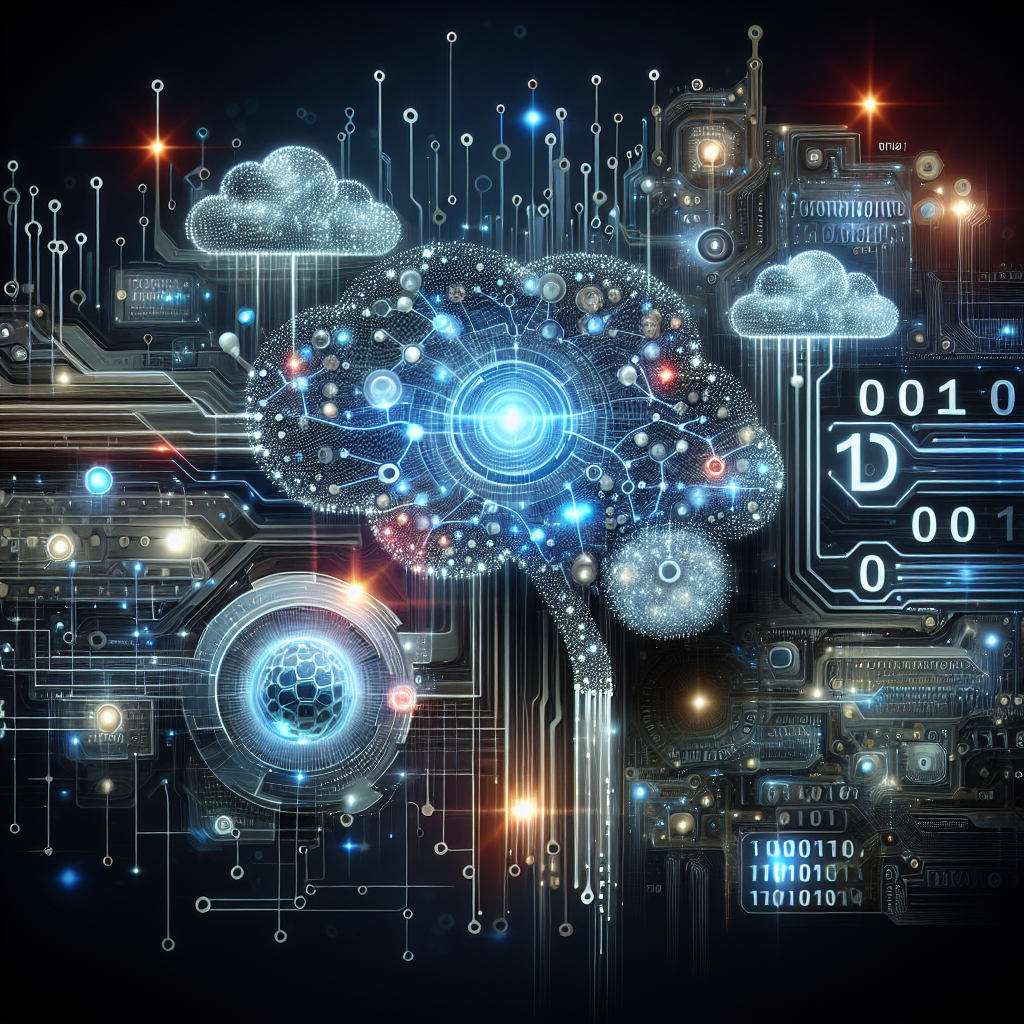Artificial Intelligence (AI) and Big Data are two of the most talked-about technologies in today’s world. While each has its own unique capabilities and applications, the intersection of AI and Big Data is where the true magic happens. This article will explore how these two technologies intersect, the benefits of combining them, and some common FAQs about this dynamic duo.
What is Big Data?
Big Data refers to the massive volumes of structured and unstructured data that organizations collect and process on a daily basis. This data comes from a variety of sources, including social media, sensors, mobile devices, and more. Big Data is characterized by the three Vs: volume, velocity, and variety. The sheer volume of data being generated is staggering, and it is growing at an exponential rate. The velocity at which this data is being generated and collected is also increasing, thanks to the proliferation of connected devices. Finally, the variety of data sources is constantly expanding, with new types of data being created all the time.
What is AI?
Artificial Intelligence, on the other hand, refers to the ability of machines to perform tasks that typically require human intelligence, such as learning, reasoning, problem-solving, and perception. AI systems can analyze data, recognize patterns, make decisions, and even communicate with humans. There are several different types of AI, including machine learning, deep learning, natural language processing, and computer vision. These technologies enable machines to mimic human cognitive functions and perform complex tasks with a high degree of accuracy.
The Intersection of AI and Big Data
The intersection of AI and Big Data is where the true power of these technologies is unleashed. By combining AI’s ability to analyze and interpret data with Big Data’s massive volumes of information, organizations can derive valuable insights and make data-driven decisions in real-time. AI algorithms can process and analyze vast amounts of data much faster and more accurately than humans ever could, enabling organizations to uncover hidden patterns, trends, and correlations that would have been impossible to detect using traditional methods.
One of the key ways in which AI and Big Data intersect is through machine learning. Machine learning is a subset of AI that enables machines to learn from data without being explicitly programmed. By training machine learning algorithms on large datasets, organizations can create predictive models that can make accurate forecasts and recommendations based on historical data. These models can be used for a variety of applications, such as fraud detection, customer segmentation, personalized recommendations, and more.
Another way in which AI and Big Data intersect is through natural language processing (NLP). NLP is a branch of AI that enables machines to understand and generate human language. By analyzing vast amounts of text data, NLP algorithms can extract insights, sentiment, and meaning from unstructured data sources such as social media, emails, and customer reviews. This enables organizations to gain a deeper understanding of their customers, competitors, and market trends.
Benefits of Combining AI and Big Data
There are several benefits to combining AI and Big Data. Some of the key advantages include:
1. Improved Decision-Making: By leveraging AI to analyze Big Data, organizations can make more informed and data-driven decisions. AI algorithms can uncover hidden patterns, trends, and correlations in large datasets, enabling organizations to identify opportunities and mitigate risks more effectively.
2. Enhanced Customer Insights: By analyzing vast amounts of customer data using AI, organizations can gain a deeper understanding of their customers’ preferences, behaviors, and needs. This enables organizations to deliver personalized products and services, improve customer satisfaction, and increase loyalty.
3. Faster Time-to-Insight: AI algorithms can process and analyze large volumes of data much faster than humans ever could. This enables organizations to derive valuable insights from their data in real-time, enabling them to respond quickly to changing market conditions and make informed decisions on the fly.
4. Scalability: AI algorithms can scale to process and analyze massive amounts of data, making them ideal for Big Data applications. Whether organizations are dealing with terabytes or petabytes of data, AI can handle the workload with ease, enabling organizations to derive insights from even the largest datasets.
5. Cost-Effectiveness: By automating data analysis and decision-making processes using AI, organizations can reduce the time and resources required to derive insights from Big Data. This can lead to cost savings and increased efficiency, enabling organizations to focus on strategic initiatives rather than mundane tasks.
FAQs
Q: What are some common applications of AI and Big Data?
A: Some common applications of AI and Big Data include predictive analytics, fraud detection, customer segmentation, personalized recommendations, supply chain optimization, and more.
Q: How can organizations get started with AI and Big Data?
A: Organizations can get started with AI and Big Data by first identifying their business goals and objectives. They should then assess their data infrastructure and capabilities to determine what data they have available and how it can be leveraged. Finally, organizations should invest in AI tools and technologies that can help them analyze and interpret their data effectively.
Q: What are some challenges organizations face when combining AI and Big Data?
A: Some common challenges organizations face when combining AI and Big Data include data quality issues, data privacy concerns, talent shortages, and technical complexity. Organizations must address these challenges to ensure the success of their AI and Big Data initiatives.
In conclusion, the intersection of AI and Big Data is where the true power of these technologies is unleashed. By combining AI’s ability to analyze and interpret data with Big Data’s massive volumes of information, organizations can derive valuable insights and make data-driven decisions in real-time. The benefits of combining AI and Big Data are numerous, including improved decision-making, enhanced customer insights, faster time-to-insight, scalability, and cost-effectiveness. As organizations continue to invest in AI and Big Data technologies, the possibilities for innovation and growth are endless.

